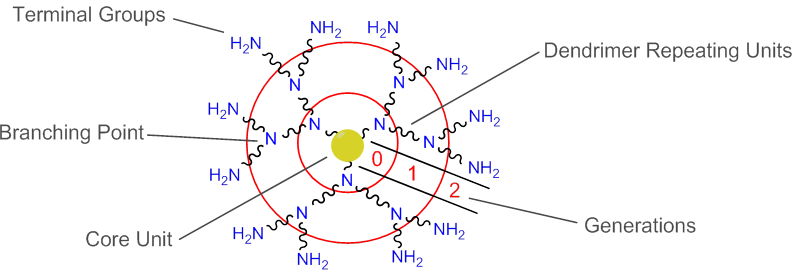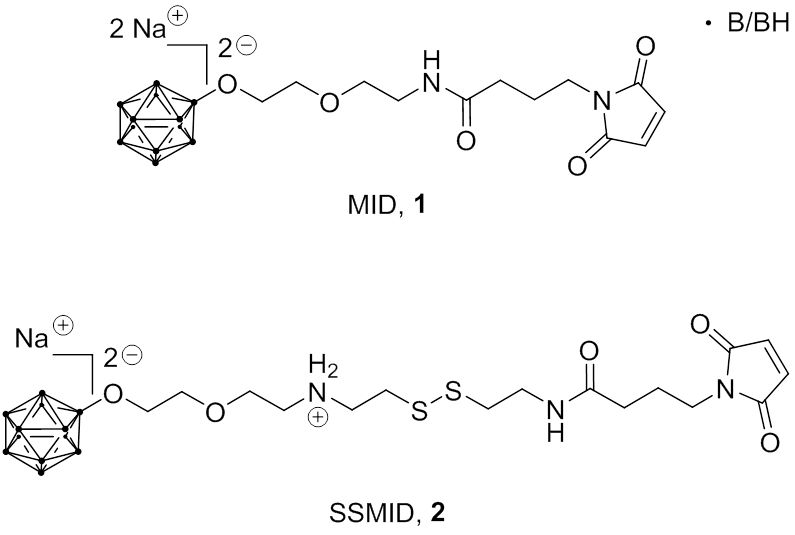3. Boron Compounds Conjugated with Biomolecules
Author: Martin Kellert and Evamarie Hey-Hawkins

© Dr. Christoph Selg
3.1. Boron-conjugated Growth Factors
The majority of high-grade gliomas express the amplified epidermal growth factor receptor (EGFR) gene, and increased numbers of EGFRs are found on the cell surface. EGF-conjugated boronated starburst polyamidoamine dendrimer (EGF-BSD) that contains ∼960 boron atoms per EGF molecule was shown by electron spectroscopic imaging to initially bind to the cell surface membrane and followed by endocytosis , which resulted in the accumulation of boron in lysosomes .

Fig. 3.1 Schematic structure of a starburst dendrimer (SBD)
3.2. Boron-Conjugated Antibodies
3.3. Boron-conjugated Proteins
Serum albumin is the most abundant monomeric multi-domain protein in plasma and well-known as a drug carrier due to its extraordinary ligand-binding capacity. Serum albumin accumulates in malignant and inflamed tissues due to the enhanced permeability and retention (EPR) effect.
A maleimide-closo-dodecaborate conjugate (MID) (1) was found to bind not only to Cys34 but also to Lys residues in bovine serum albumin (BSA) under physiological conditions according to a western blot analysis using anti-BSH antibody. An S–S bond-containing MID (SSMID) (2) was synthesized for identification of albumin binding sites: Three Lys residues, Lys221, Lys413 and Lys431, were identified as MID modification sites in addition to Cys34 in BSA. The BSA-MID conjugates showed high and selective accumulation in tumor and significant tumor growth inhibition in colon-26 tumor-bearing mice subjected to thermal neutron irradiation even at a dose of 7.5 mg[B]/kg.

Fig. 3.3 Molecular structure of MID and SSMID
1. Basic Requirements of BNCT – BSH and BPA
2. Development of Small Boron-containing Molecules as BNCT Agents
2.1. Amino Acid Derivatives
2.2. Nucleic Acid Derivatives
2.3. Boronated Porphyrins and Their Analogs
2.4. Carbohydrates
2.5. Peptides
2.6. DNA- or Mitochondria-targeting Molecules
3. Boron Compounds Conjugated with Biomolecules
3.1. Boron-conjugated Growth Factors
3.2. Boron-Conjugated Antibodies
3.3. Boron-conjugated Proteins
4. Boronated Polymers, Liposomes, and Other Nanoparticles as Boron-delivery Systems
4.1. Boronated Polymers and Micelles
4.2. Boronated Biopolymers
4.3. Emulsions
4.4. Liposomes
4.5. Boronated Nanoparticles
4.6. Boronated Nanotubes
